Around Myanmar
Myanmar features a wide array of cultural and natural wonders, from Myeik Archipelago in the south to mountainous Putao in the north, the ancient city of Mrauk U in the west and hill tribes of Kengtung in eastern Shan State. With beaches, adventure activities, picturesque train journeys, pagodas, palaces, trekking and more, the country has something for all travellers. Our tailor-made packages allow you to combine your choice of the following destinations with a preferred mode of transport.
Yangon
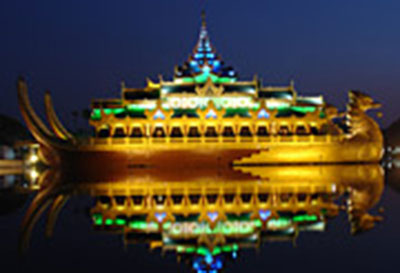
The country’s commercial heart, Yangon has in the past been overlooked as a destination but foreign visitors are once again enjoying the vibrancy and cosmopolitan charm that made it the jewel in the crown of the British Empire in Southeast Asia. With a plethora of cultural attractions and events, including art exhibitions and music concerts, it’s got enough to keep the curious traveller occupied for several days. Top of the list of attractions is Shwedagon Pagoda: the 97-metre gold stupa, which reputedly dates back 2500 years, still dominates the city’s skyline. Equally enthralling is the downtown area, which boasts the largest collection of colonial-era buildings in the region.
Around Yangon
A former Portuguese outpost, Thanlyin (previously known as Syriam) was until the 18th century larger than Yangon. About 45 minutes drive east of Yangon’s downtown area, over the Bago River, it is today a quiet collection of pagodas, monasteries and agricultural settlements, with a small but attractive downtown area. However, the area is set to be transformed in coming years by a nearby Special Economic Zone and deepsea port. About an hour drive west of Yangon is Twante, a small trading town on the edge of the Ayeyarwady delta where Eric Arthur Blair – who later became the author George Orwell – was posted as a policeman in the 1920s. The town’s main attractions are Shwesandaw Pagoda and its small pottery industry. About 1.5 hours drive to the northeast of Yangon – and also reachable by train – Bago is home to a plethora of ancient pagodas, including the Shwemawdaw Pagoda, with a stupa that, at 113 metres, is higher even than Shwedagon Pagoda.
Mandalay
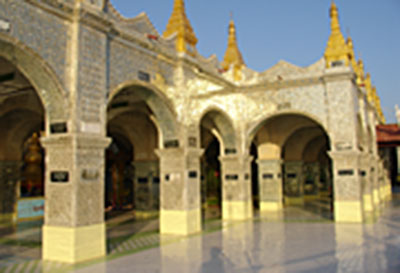
Rudyard Kipling never visited Mandalay, but his Road to Mandalay has done more for the city’s appeal than any tourism campaign could hope to achieve. The last royal capital of the Burmese kings before British annexation in 1886, visitors can expect to find vestiges of this royal history alongside a large Buddhist community and thriving business sector, which has grown exponentially in recent years largely through trade with China. The city also makes a useful jumping off point for visiting the former royal capitals of Amarapura, Inwa and Sagaing. Also popular are Mingun, home to the massive Mingun Bell, and Pyin Oo Lwin, a hill station about 1.5 hours drive to the east.
Around Mandalay
For centuries Burmese kings made their home among the fertile plains of the Ayeyarwady River near Mandalay, and today the remains of their former capitals dot the area. Amarapura, located about 30 minutes drive south of the city’s downtown, is a picturesque community located around Taunthaman Lake. It is famous for U Bein’s Bridge, which boasts more than 1000 huge teak support posts. Further south lies Inwa, which became the capital after the fall of the Bagan empire in the late 13th century. Over the Ayeyarwady River to the west is Sagaing, home to a thriving monastic community, a modern downtown area and a number of large pagodas. North of Sagaing, also on the west bank of the Ayeyarwady, is Mingun, which boasts a huge unfinished pagoda and the 90-tonne Mingun Bell, the largest ringing bell in the world.
Northern Shan State
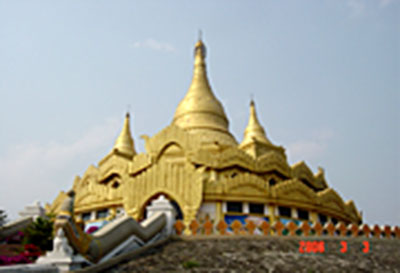
The reopening of the highway linking Mandalay with China in the early 1990s has transformed a small corridor of northern Shan State into a bustling trade zone – and opened it up to foreign tourism. The first stop, about 1.5 hours east of Mandalay, is Pyin Oo Lwin, which the British established as a summer retreat in the early 20th century. The town still boasts many beautiful wooden colonial homes, as well as diverse mix of residents, with large Chinese, Nepali and Shan communities. Further east, Kyaukme and Hsipaw are both popular as bases for trekking into the mountains to visit ethnic minority villages, particularly the Palaung, who are famous for their tea-growing abilities. The journey from Mandalay to Lashio, the last major town before the border, can also be made along a slow, narrow-guage railway, which takes you over the breathtaking Gokteik Viaduct, a 94-metre-high bridge built in the early 20th century.
Southern Shan State
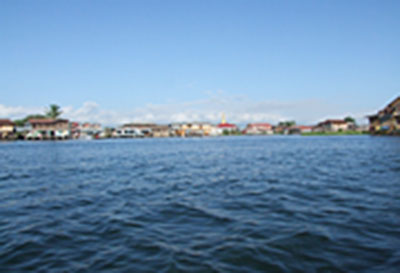
The jewel of southern Shan State is Inle Lake, one of the country’s major tourist destinations. A cultural and natural attraction, it is located in a valley between two ridgelines of the Shan hills. The lake if famous for its leg-rowing fishermen and villages perched above the water. Nearby Taunggyi is the capital of Shan State and, set on top of a large mountain, boasts cold winters and wonderfully mild summers. It is also the gateway to Kekku, a charming mass of stupas set in the self-administered zone of the Pa-O, one of Myanmar’s many ethnic minority groups. Further to the west, Kalaw is an excellent base for trekking to nearby villages and a charming town in its own right, while Pindaya lures tourists with its huge cave complex, which is filled with golden Buddha images.d.
Bagan
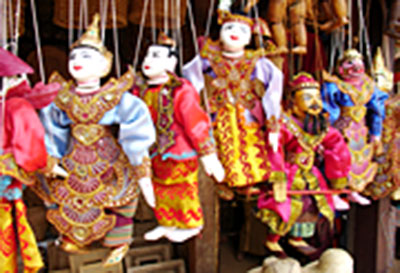
Rivalling Cambodia’s Angkor Wat with its jaw-dropping array of archaeological wonders, Bagan is an adventurer’s delight, with literally thousands of stupas to discover. Established around the turn of the millennium, Bagan shot to prominence under King Anawrahta – considered the founder of the First Burmese Empire – but mysteriously collapsed in the late 13th century, possibly after an invasion by the Mongols. It remained largely untouched for centuries and many pagodas remain in excellent condition. The best way to get around is by bike or pony cart. A trip to Bagan is not complete without watching the sun set over the Ayeyarwady River and the Bagan plain from the top of one of the ancient city’s taller pagodas.
Around Bagan
Nearby Mount Popa is sometimes referred to as the Oasis of the Dry Zone, as it boasts a relatively temperate climate. The 30-minute walk to the top is steep but is worthwhile for the sensational views of the Bagan plain. Formed by a volcano some 250,000 years ago, the rocky 725-metre peak is considered the home of the nats, popular animist spirits that predate Buddhism, and is covered in shrines and stupas. About an hour south of Bagan is Salay, an active religious centre that is home to several large monasteries. The most famous of these is the teak Yotesone Monastery, which took 10 years to build and was completed in 1892.
Chin State
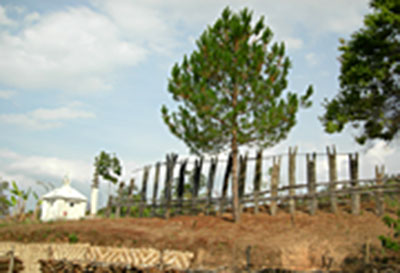
Remote, mountainous and sparsely populated, Chin State, located in Myanmar’s west along the border with India, remains largely off-limits to foreign travelers. However, it is expected to open up in the coming years, particularly given its attraction as an eco-tourism and cultural destination. The most-visited site in the state is Natmataung, previously known as Mt Victoria. At more than 3000 meters high, the mountain is a challenge to summit but offers a glimpse of the cultural and natural wonders of this overlooked region. It is also possible to visit Paletwa, in southern Chin State.
Sittwe
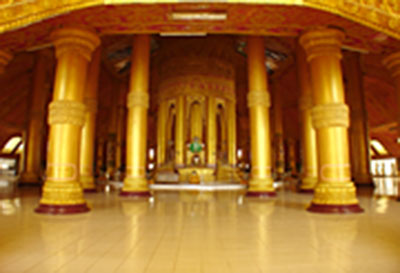
The capital of Rakhine State, Sittwe is located at the mouth of the mighty Kaladan River and is a major centre for the fishing industry, exporting mostly to nearby Bangladesh. The morning fish market is one of the town’s major attractions, along with its beachfront, viewpoint and a handful of pagodas and mosques. The city boasts a tonne of old-world, colonial-era charm but is slowly modernising thanks in part to an India-backed river and road transport project that will see it become a trade centre for India’s landlocked northeastern states.
Mrauk U
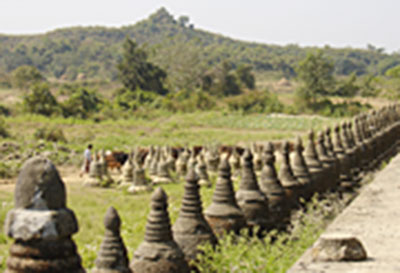
The independent Rakhine kingdom with its capital at Mrauk U flourished for hundreds of years, until its destruction at the hands of the Burmese in 1784. The city remains a fascinating destination for travellers, and more than holds its own against Bagan, with an array of unique pagodas and fortresses. Mrauk U can be reached from Sittwe by car or boat, a pleasant five-hour journey up the Kaladan River that takes you past fertile farmland and small hills capped by stupas. From Mrauk U travellers can also take a boat up the Lemro River to ethnic Chin villages, where some older women can be seen with the distinctive face tattoos that the Chin are renowned for.
Ngapali
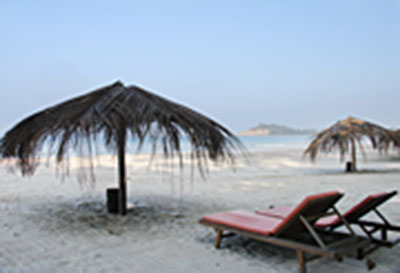
The country’s top beach destination, Ngapali is located in southern Rakhine State and offers a pleasant alternative to overdeveloped beach resorts elsewhere in the region. Reachable by a 45-minute flight from Yangon, the 3.2 kilometre stretch of white sand boasts just a dozen hotels, all designed to be as unobtrusive as possible. The warm waters are great for swimming from October through May, but travel to Ngapali is difficult during the heavy rains of the monsoon season. Visitors are able to visit nearby islands and go snorkelling and fishing. The fresh and cheap seafood at Ngapali is guaranteed to leave you with fond memories long after your holiday is over.
Ngwe Saung and Chaungtha
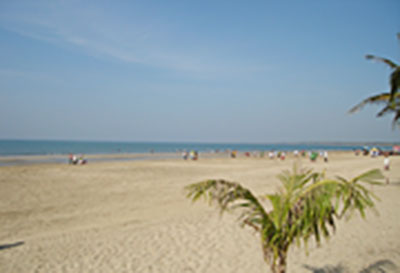
On the western edge of the Ayeyarwady delta, these two beaches are both a five-hour drive from Yangon. Ngwe Saung caters more towards foreign tourists, with a number of high-end resorts but also quality mid-range and budget accommodation. Both beaches are popular during the Christmas and Water Festival holidays, with Chaungtha the more lively as it attracts a mostly local crowd. Nevertheless, both offer a white sand beach fringed with palm trees in a delightful tropical setting. The beaches are about one hour from Pathein, the capital of Ayeyarwady Region.
Tanintharyi Region
Often overlooked by travelers, sleepy Tanintharyi Region is set to develop significantly thanks to a massive Special Economic Zone near its capital Dawei, which is likely to bring both hotels and beach resorts. For now, however, the few visitors who do make it to Tanintharyi Region come to see the stunning Myeik Archipelago, which is home to the Salone, or sea gypsy, people and has hundreds of uninhabitated islands. The best way to see the islands is by a multi-day boat trip from Myeik or Kawthoung, across the border from Thailand.
Mon State
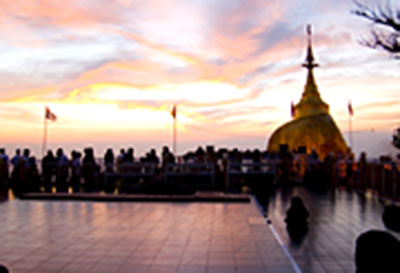
With no major airports, Mon State can be reached only by road or rail and offers a pleasant multi-day side trip from Yangon. The most popular destination is Kyaikhtiyo, better known as Golden Rock, set in a remote patch of mountain About four hours drive from Yangon. There are two options to reach the rock: a steep 45-minute walk from Rathetaung bus station, or an equally steep 6-hour walk from the lower Kinpun station. Further to the east, the state capital of Mawlamyine sits at the mouth of the mighty Than Lwin River. The city was the capital of British Burma for several decades before Yangon was annexed in the 1850s. While it is still one of the country’s largest cities, its status had diminished significantly but Mawlamyine retains a faded charm. Further up the Than Lwin River – and reachable by car or boat – is Hpa-an, the capital of Kayin State.
Taungoo and Pyay
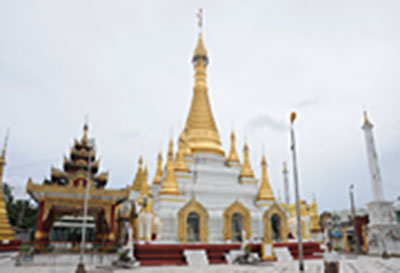
These two mid-sized trading towns, located on the border of lower and upper Myanmar, about halfway between Yangon and Mandalay, make interesting diversions for travelers who want to see the “real” Myanmar. Located on the banks of the Ayeyarwady River, Pyay is also the gateway to nearby Sri Ksetsra, an ancient city of the Pyu civilisation that rose to prominence in the fifth century AD. Taungoo, meanwhile, makes an excellent jumping off point for those wanting to see elephants at work extracting timber in the nearby Bago mountains. To the east lies Than Daung, an off-limits hill station that is expected to open up to tourists in coming years.
Nay Pyi Taw
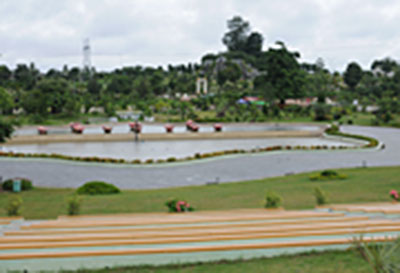
Nay Pyi Taw became the country’s capital in late 2006 and has slowly started to grow into its vast array of cavernous government and administrative buildings. It is about halfway between Yangon and Mandalay on a newly built concrete highway and is about a four-hour journey from each. Mostly an administrative capital, Nay Pyi Taw nonetheless fills up during the biannual gem shows, when Chinese and Thai traders pack out the city’s hotels. It is set to host the 2013 Southeast Asian Games and a series of Association of South East Asian Nations (ASEAN) meetings in 2014, when Myanmar will chair the regional grouping for the first time.
Eastern Shan State
The main attraction in eastern Shan State is Kengtung, a delightful town about equidistant between the Thai, Lao and Chinese borders. The surrounding hills are filled with an overwhelming assortment of ethnic minorities that have migrated to the region over the past several hundred years. The dominant ethnic group is the Shan, who mostly inhabit the lowlands. The villages can easily be reached by car or motorbike, and it is recommended that you hire a guide to communicate with residents. About three hours to the south, Tachileik sits on the Thai border opposite Mae Sai and is mostly a commercial town, with a large and bustling market. From the rest of Myanmar eastern Shan State can only be reached by air, with regular flights linking Tachileik and Kengtung to the rest of the country.
Kachin State
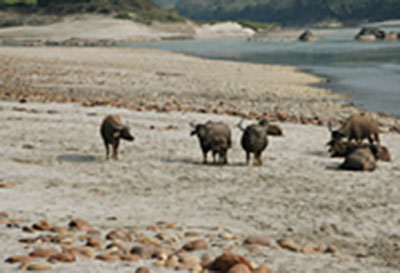
The Kachin State capital Myitkyina is located on the Ayeyarwady River, not far from where the Maikha and Malikha rivers meet at the confuence, known as Myitsone. A prosperous town thanks to its proximity to China and the jade mines of Hpakant – still mostly off limits to foreigners – Myiktyina is well worth visiting for a few days. Further downriver is Bhamo, the highest navigable point for most riverboats and a bustling trading town. In the northern reaches of the country, Putao is a remote centre of trekking and rafting in the nearby Himalayan foothills. The town is reachable only by air from Myitkyina.
Activities
Bicycle tours
Traveling around Myanmar on two wheels give you the chance to get off the beaten track and explore bucolic back roads and quiet villages, where locals seldom see foreign visitors. Bicycle tours can be combined with air, road and rail travel, enabling you to see all of the country’s major destinations while maintaining a leisurely pace. The best places for riding are in central Myanmar, such as Bagan and Mandalay.
River cruises
With several major waterways, including the Ayeyarwady (formerly Irrawaddy) River, Myanmar offers wonderful opportunities to travel by riverboat. The most popular route is between Mandalay and Bagan, but tours can go as far south as Yangon and up to Bhamo in Kachin State. Several companies ply the Ayeyarwady, ranging from the luxurious Road to Mandalay to the local Inland Water Transport ferries. Other popular river routes include Sittwe-Mrauk U and Mawlamyine-Hpa-an.
Train travel
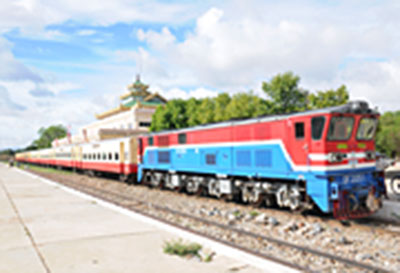
Traveling by train in Myanmar is slow and sometimes uncomfortable, yet it has an undeniable charm that bus and plane travel can’t match. The most convenient route is Yangon-Mandalay, which takes approximately 14 hours, but the most spectacular is undoubtedly Mandalay-Lashio, which takes you from the plains of the Ayeyarwady valley to the hills of Shan State and over the Gokteik Viaduct, a century-old rail bridge. Other picturesque routes include Thazi-Shwenyaung in southern Shan State, Mandalay-Myitkyina and Yangon-Mawlamyine.
World War II
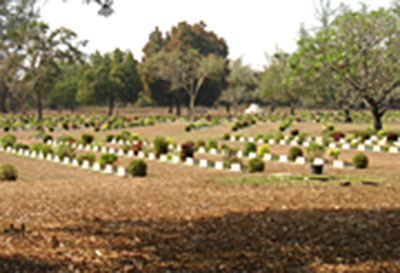
Myanmar was the scene of some of the fiercest fighting of World War II, with the Japanese successfully driving out the British in 1942 before losing their prize in 1945. It has a number of sites that date back to this era, including Taukkyant War Cemetery, about 30 minutes drive north of Yangon, and Yangon War Cemetery in the inner city. In Mon State, a cemetery at Thanbuzayat is home to the remains of many who died constructing the Thai-Burma Railway, also known as the Death Railway, of which Thanbuzayat was the railhead in Myanmar.
Trekking
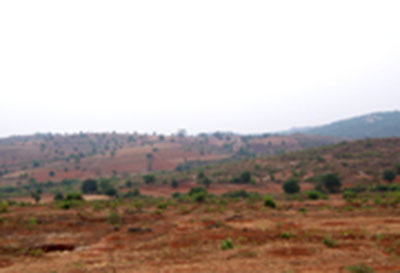
Myanmar offers excellent trekking opportunities, with many of the country’s smaller ethnic minority groups – particularly those in the mountainous border regions – maintaining a relatively traditional way of life. The best places for trekking are in Shan State, and in particular Kyaukme in the north, Kalaw in the south and Kengtung in the east. Guides are relatively cheap, knowledgeable and easy to find.
Beaches
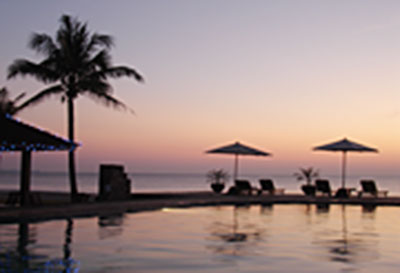
With three high class yet quiet tourist beaches, Myanmar is paradise for those looking for an escape to the sun, sand and surf. Ngapali in southern Rakhine State is considered the pick of the bunch, but Ngwe Saung and Chaungtha are also popular choices and better for those on a budget, because of their proximity to Yangon. All three have been tastefully developed with low-density, low-rise accommodation options to suit all budgets.
Myeik Archipelago
The stunning yet rarely visited Myeik Archipelago is one of the country’s natural wonders, with hundreds of islands set amongst the azure waters of the Andaman Sea. A handful of local companies offer multi-day cruise packages on small boats through the archipelago, departing from either Myeik or Kawthoung. From your boat you can kayak, swim, snorkel and explore the islands of the region, eating fish that you catch yourself.
Adventure travel
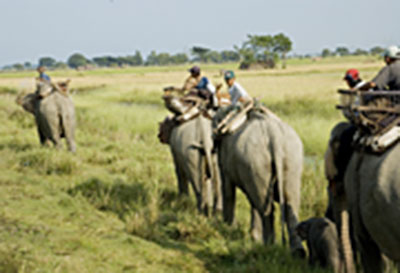
The remote outpost of Putao in northern Myanmar is ideal for those seeking a dose of adventure travel. For now, however, it remains largely unknown and rarely visited. The area offers extreme trekking options, including the 35-day “last village” trek into the Himalayan foothills, as well as mountain climbing, mountain biking, elephant rides and white water rafting.
Food
Given its diverse population, it’s probably not surprising that Myanmar has a similarly varied range of cuisine options. Yangon is the best place for dining, with both international – Western and Asian – options as well as a range of traditional food, including Shan, Rakhine and Kachin. Burmese cuisine is rice based, and meals include a variety of meat and vegetable curries as well as salads and soups. Chinese food is widely available, even outside the main towns and cities.
Ethnic groups
Myanmar is home to eight main ethnic groups – the Bamar, Chin, Kachin, Kayah, Kayin, Mon, Rakhine and Shan – and 135 officially recognized groups altogether. The Bamar make up about two-thirds of the total population and dominate the lowland areas, while the other ethnic groups are mostly found in the country’s hilly border areas. Trekking provides the ideal opportunity to meet members of some of Myanmar’s smaller ethnic groups.
Address
No. 32, Luck Moe Swe Street, Bayint Naung Avenue, Insein Township, Yangon (11011), Union of Myanmar.

Nice Vacation Travels & Tours
Contact Info
+951 3641303, +959 443145744,
+959 795856750
nicevacation@ytp.com.mm
nicevacationmyanmar@goolgemail.com
www.nicevacationmyanmar.com
Web Developer: Myanmars.NET, Yangon, Myanmar.© Copyright 2024 by Nice Vacation Travels & Tours.
